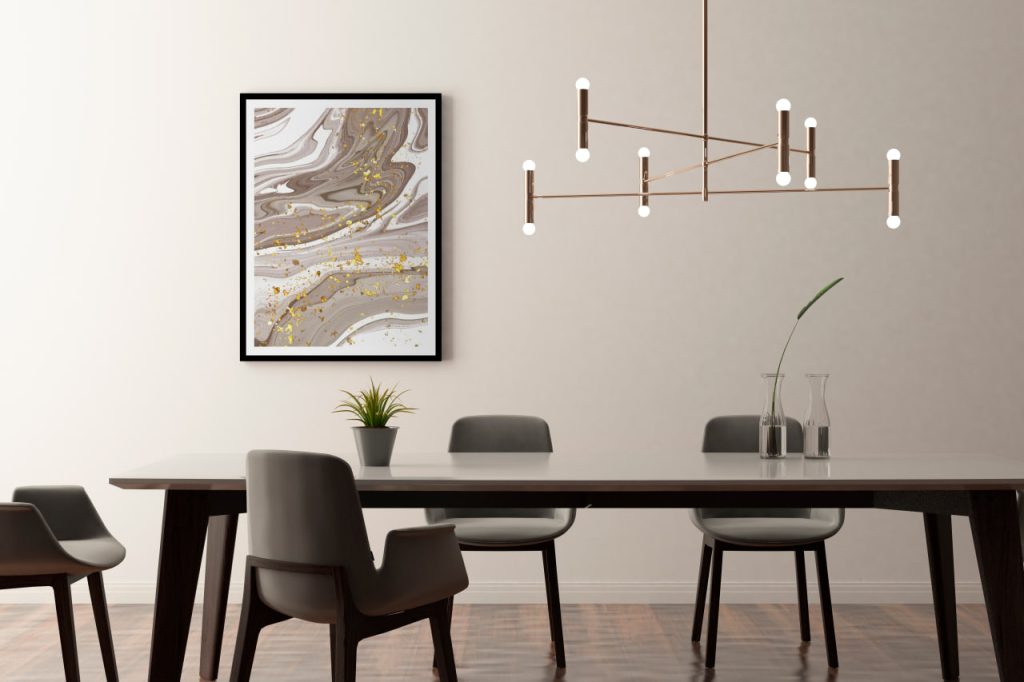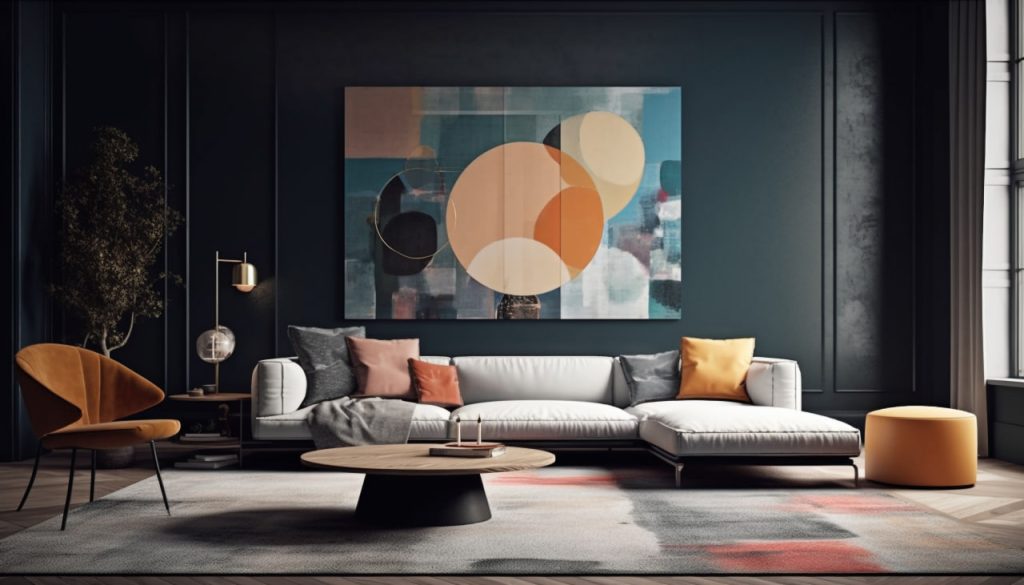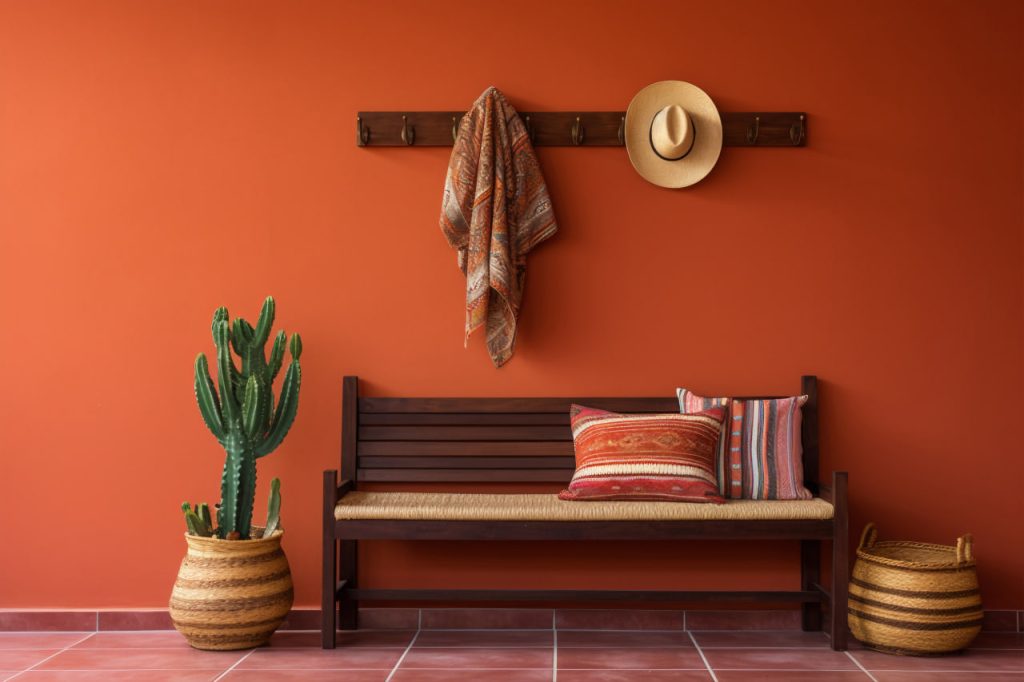The art of improving the look and usefulness of an indoor area by incorporating furniture, lighting, color, textiles, and accessories is known as interior decorating. Experts with a keen eye for beauty and up-to-date knowledge of the latest trends and styles typically handle this task. Interior decorating is distinct from interior design, which is a more formal and technical field that necessitates specialized education and training. In this blog post, we will delve into the fundamentals of interior decorating, the art of arrangement, and how to begin your own decoration project.
Interior Design V.S Interior Decorating
People often mistake interior design and interior decorating for one another, but they have distinct differences. Interior design is the art and science of creating functional and comfortable spaces within a structure by understanding people’s behavior and requirements. Interior designers study various aspects of design, such as color theory, space planning, furniture design, architecture, and more. Additionally, they utilize computer-aided design (CAD) software to develop plans and drawings, collaborating closely with architects, contractors, and other experts to bring their vision to life. While interior designers may also provide interior decorating services, it is important to note that not all interior decorators are interior designers.

Interior design, on the other hand, involves the process of enhancing and beautifying a space by incorporating decorative elements to create a specific ambiance or atmosphere. Unlike interior decorators, interior designers do not need formal education or training, but they typically possess a keen sense of color, style, and balance. They are also knowledgeable about various furniture suppliers, fabric options, accessories, and other decor items. Interior designers collaborate directly with clients to understand their preferences, budget, and lifestyle, assisting them in selecting and arranging the decor elements within their space. While interior decorators may collaborate with interior designers, their role does not involve designing the actual space itself.
Elements of Interior Decorating

There are numerous options when it comes to decor elements that can enhance the appearance and functionality of an interior space. Some of the most prevalent ones include:
Furniture Can Make or Break Your Interior Decoration
Furniture is one of the most essential and visible elements of decor, as it provides comfort, storage, and style to a space. Choosing furniture is easy if you consider these factors: space size and shape, space function and purpose, and style and mood preference. Moreover, there is a wide array of materials available for selection, including wood, metal, plastic, leather, fabric, and many others. Furthermore, furniture can be personalized with a diverse range of finishes, colors, and patterns. To enhance the visual appeal of a room, furniture can be arranged in different ways. You can position it symmetrically, asymmetrically, or in clusters to achieve balance, contrast, or focal points.
The Role of Lighting in Decoration
Furnishing is greatly influenced by lighting, as it plays a crucial role in setting the mood, creating ambiance, and enhancing visibility within a space. Lighting options can vary between natural and artificial sources, each capable of producing different effects such as bright, dim, warm, cool, or colored lighting. Employing lighting strategically can effectively highlight particular features or sections of a room, such as artwork, plants, or architectural details. Various sources like windows, lamps, chandeliers, sconces, candles, and more can provide lighting, while switches, dimmers, timers, or sensors offer control over its intensity and timing.
The Importance of Color in Decoration
Color is one of the most expressive and influential elements of decor, as it can create different moods, feelings, and impressions in a space. The utilization of color can bring about contrast, harmony, or unity within a given space. Additionally, it can serve to highlight or downplay particular elements or regions. It is possible to incorporate color onto different surfaces like walls, ceilings, floors, furniture, fabrics, and accessories. The selection of color can be based on the color wheel, color schemes, or color psychology. Additionally, the lighting, size, and orientation of a space can have an impact on the perception of color.
Add Texture and Warmth to Your Decor
Textiles can add texture, pattern, and softness to a space, and they are one of the most versatile and decorative elements of decor. You can cover, cushion, or drape a range of surfaces with textiles, including furniture, windows, beds, tables, and more. You have a wide range of materials to choose from, including cotton, silk, wool, linen, and others. This allows you to personalize your decor according to your preferences. Textiles come in various prints, embroideries, appliques, and embellishments, which can be combined or matched to produce diverse outcomes.
Accessories Can Complete Your Furnishing
To add charm and personality to your space, consider using accessories. Accessories are a great way to showcase your individuality, preferences, and hobbies. There are many choices available to you, including artwork, photographs, books, plants, flowers, candles, vases, sculptures, clocks, mirrors, and more. By incorporating these accessories, you can create a distinctive and expressive environment that reflects your style. You can improve the appearance of your space by incorporating functional items such as baskets, trays, boxes, and hooks as decorative accents. Place them on tables, walls, shelves, or group them together to add interest and variety.
Art of Composition in Interior Decoration

The art of arranging decor elements in a harmonious and pleasing manner is known as composition. It relies on principles and guidelines to create a sense of order, balance, and beauty in a space. Some commonly used principles and guidelines include:
Focal Point: The Center of Interest in Your Interior Decoration
A focal point is the main element or area in a space that captures the most attention and acts as the center of interest. To create a focal point, you can include a standout feature such as a fireplace, painting, chandelier, or bold sofa. You can also use lighting, accessories, or other elements to enhance and highlight the focal point.
Scale and Proportion: The Magic Formula for Furnishing
Scale and proportion refer to how the size and shape of decorative items relate to the space they are in. These factors can greatly impact the visual balance, weight, and harmony of a room. Achieving proper scale and proportion involves selecting elements that are suitable for the size and shape of the space, as well as incorporating elements that are similar or complementary in size and shape.
Rhythm and Repetition: Add Movement to Your Space
The elements of decor in a space can create patterns and movements that result in rhythm and repetition. These patterns can bring a sense of flow, continuity, and cohesion to the space. You can create rhythm and repetition by using elements that have similar colors, shapes, textures, or patterns in a consistent or random way.
Using Contrast and Variety in Furnishing: The Key to a Dynamic space
Contrast and variety refer to the distinctions and alterations brought about by the decorative elements within a given area. They have the ability to generate a feeling of intrigue, enthusiasm, and multiplicity within that space. Create a striking contrast and variety by blending various colors, shapes, textures, or patterns in an unexpected or distinctive manner.
Harmony: The Key to a Beautiful and Relaxing Space
The elements of decor in a space can evoke feelings of agreement and completeness, resulting in harmony and unity. Create a striking contrast and variety by blending various colors, shapes, textures, or patterns in an unexpected or distinctive manner. A balanced and symmetrical arrangement of these elements is key to achieving this effect.
Ready to decorate your space? Follow these tips to get started:
If you have a passion for interior decorating and are eager to begin your own decor project, these tips will guide you:
- Define your style and goals: Imagine your dream space: What style and mood do you want? How will you use it? Start with these questions. Look for inspiration from different sources like magazines, books, websites, blogs, or social media. You can also make a mood board or collage with pictures, colors, fabrics, and accessories that represent your desired result.
- Assess your space and budget: It’s time to take a closer look at your space and evaluate it. What furniture, lighting, color, textiles, and accessories do you need, want, or already have? Make sure to establish a realistic budget and create a priority list for purchasing, replacing, or reusing items.
- Plan and sketch: After that, it’s time to plan and sketch out your spatial arrangement. How do you intend to arrange and blend the decorative pieces?
- Shop and source: Following that, it is crucial to create and illustrate the design of your space. Determine the placement and integration of the decor elements. You can also ask for recommendations, reviews, or samples from friends, family, or professionals.
- Install and arrange: Embellish your surroundings by installing and organizing decorative elements that are both aesthetically pleasing and functional. Whether you choose to stick to a preconceived plan or improvise as you go, ensure that safety is a top priority. Don’t hesitate to seek the input and assistance of loved ones or experts in the field.
